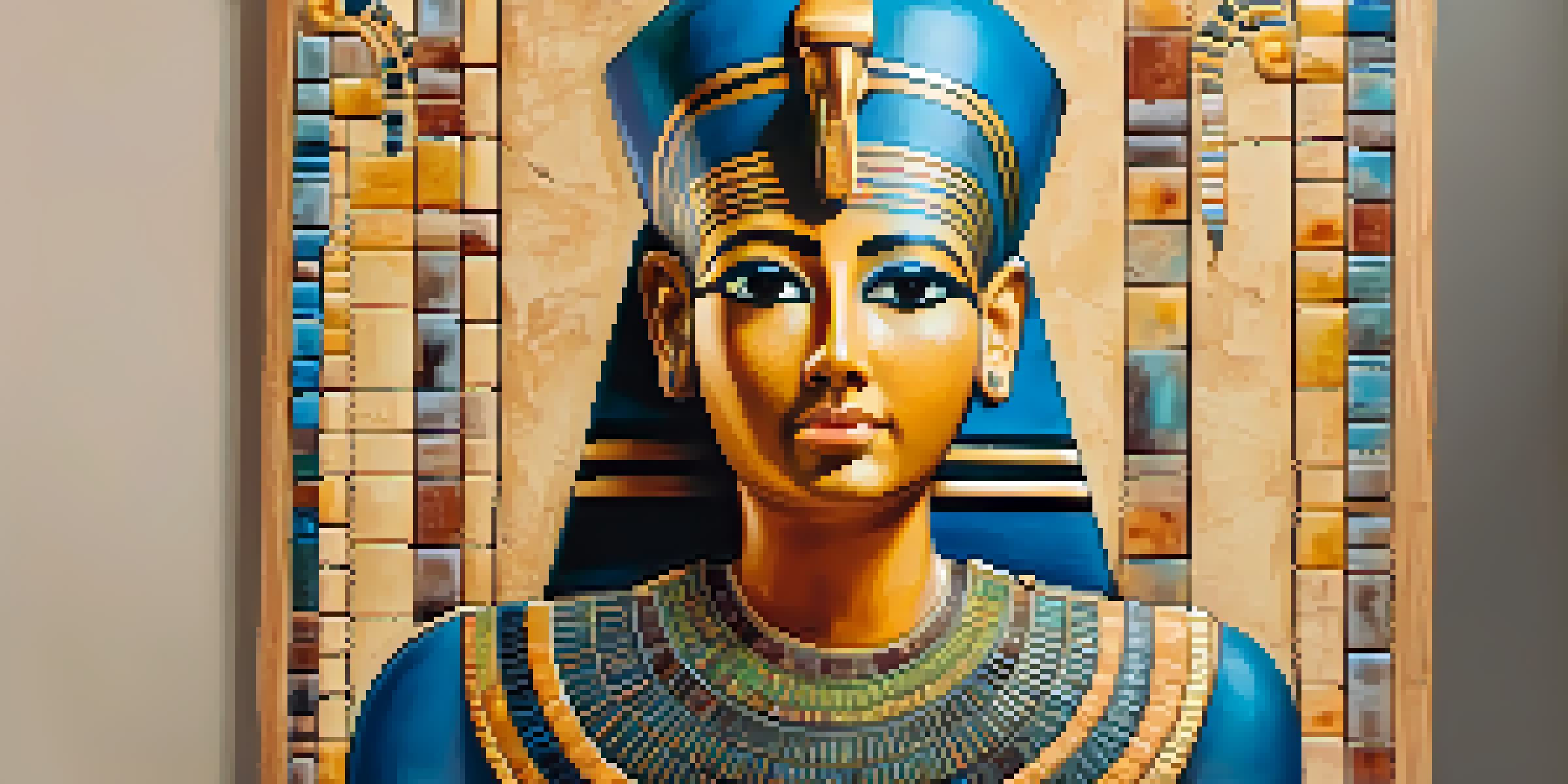The Evolution of Encaustic Painting in Ancient Cultures

Understanding Encaustic Painting: A Historical Overview
Encaustic painting, a technique involving heated beeswax mixed with pigments, dates back to ancient times. This art form has been discovered in various cultures, showcasing its wide appeal and versatility. The method allows for vibrant colors and a unique texture that cannot be replicated by other means. Each brushstroke becomes a work of art, infused with the essence of the materials used.
Ancient Egypt: The Birthplace of Encaustic Techniques
One of the earliest known uses of encaustic painting can be traced to ancient Egypt. Here, the technique was employed to create detailed portraits on wooden panels, often used in funerary contexts. The Egyptians utilized the durability of wax to preserve the likenesses of the deceased, believing it connected them to the afterlife. This practice highlights the spiritual significance and utility of encaustic in ancient cultures.
Encaustic's Rich Historical Roots
Encaustic painting has ancient origins, with techniques traced back to cultures like Egypt, Greece, and Rome, highlighting its versatility and spiritual significance.
The Greeks: Elevating Encaustic to New Heights
The Greeks took encaustic painting to another level, using it for both decorative and practical purposes. Artists like Apelles became renowned for their mastery of this medium, showcasing its potential in public art and portraiture. The Greeks also experimented with layering techniques, adding depth and vibrancy to their works. This period marked a significant evolution in the perception and application of encaustic paint.
Roman Innovations: Encaustic in Everyday Life
As the Roman Empire expanded, so too did the techniques of encaustic painting. Romans used this method not only for artistic endeavors but also for practical applications, such as decorating furniture and even ships. The durability of encaustic paint made it ideal for everyday objects, blending functionality with artistry. This integration into daily life further solidified encaustic’s importance in ancient cultures.
Religious Significance in Byzantine Art
During the Byzantine era, encaustic painting became essential for creating vibrant religious icons, enhancing the spiritual presence of the artwork.
Byzantine Era: Spiritual Expression through Encaustic
In the Byzantine era, encaustic painting became a prominent medium for religious iconography. Artists used the technique to create vibrant, luminous images of saints and biblical scenes, which were often displayed in churches. The wax not only preserved the colors but also added a tactile quality to the icons, enhancing their spiritual presence. This period showcased how encaustic painting could convey deep religious emotion and devotion.
The Decline of Encaustic: Factors Behind the Shift
Despite its rich history, encaustic painting experienced a decline during the Renaissance as oil painting gained popularity. Artists began to favor the smoother finish and ease of manipulation that oil paints offered. As a result, traditional encaustic techniques were largely overshadowed, leading to a decrease in their use. However, this shift marked a transformative phase in the art world, prompting new innovations.
Modern Revival of Ancient Techniques
Today, contemporary artists are rediscovering encaustic painting, blending traditional methods with modern creativity to keep this ancient art form alive.
Modern Revival: Rediscovering Encaustic Techniques
In recent years, there has been a resurgence of interest in encaustic painting among contemporary artists. Many are rediscovering the technique, experimenting with its properties to create innovative works. Workshops and classes now teach traditional methods alongside modern applications, bridging the gap between ancient practices and today’s art scene. This revival speaks to the timeless appeal of encaustic as a medium for creative expression.
The Lasting Impact of Encaustic Painting in Art History
The evolution of encaustic painting across ancient cultures has left a lasting legacy in the art world. Its rich history showcases the adaptability and enduring appeal of this unique medium. From ancient Egypt to modern-day studios, encaustic painting continues to inspire artists and captivate audiences. Understanding its journey helps appreciate the depth of human creativity and the connections we share through art.